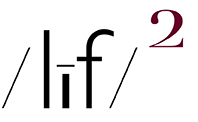(embiggenable)
(embiggenable)
(embiggenable)
“…By unhinging our customary perceptions of the world, the visual artist forces viewers to experience what has become habitual with renewed attention.” ~ Daniell Cornell
“Photography is a contest between a photographer and the presumptions of approximate and habitual seeing. The contest can be held anywhere.” ~ John Szarkowski
THE ABOVE EXCERPT WAS LIFTED FROM AN ESSAY which was written to accompany the 1999 Yale University Art Gallery exhibition, Alfred Stieglitz and the Equivalent, Reinventing the Nature of Photography. In the essay the author, Daniell Cornell, introduced an early-tewentieth-century linguistic theory in which a Russian university professor proposed that the function of poetic language was…
“…not to reflect reality but to make it strange…Russian Formalists called the disorientation created by such an estrangement from one’s usual perceptions defamiliarization, identifying it as the central characteristic shared by all artistic representations.”
While I have never spent much time over-thinking the idea of defamiliarization-or, to be honest, ever recognizing it as such-I can certainly write that one of the most common and oft-heard comments, re: my pictures, which i really appreciate is, “I don’t know why I like these pictures but, I do like them.” It now seems obvious, to me, that comment-or a variation thereof-is the result of my picturing making act of employing the concept of defamiliarization. That is, making pictures of referents which are not perceived as subjects for the making of what the great unwashed masses of the picture making world think is a suitable referent.
Most of those viewers of my pictures, when they realize that they like a picture(s), seem to become disoriented, aka: “I don’t know why it like it.” Of course, what they most often fail to realize* is that their liking is not incited by what is depicted but rather by the visual impression, the form, created by how it is depicted-my version of unhinging of customary perceptions of the world-aka: my vision thing…the vision thing which, seemingly, is the by-product of how I see.
*“My aim is increasingly to make my photographs look so much like photographs that unless one has eyes and sees, they won’t be seen.” ~ Alfred Stieglitz
